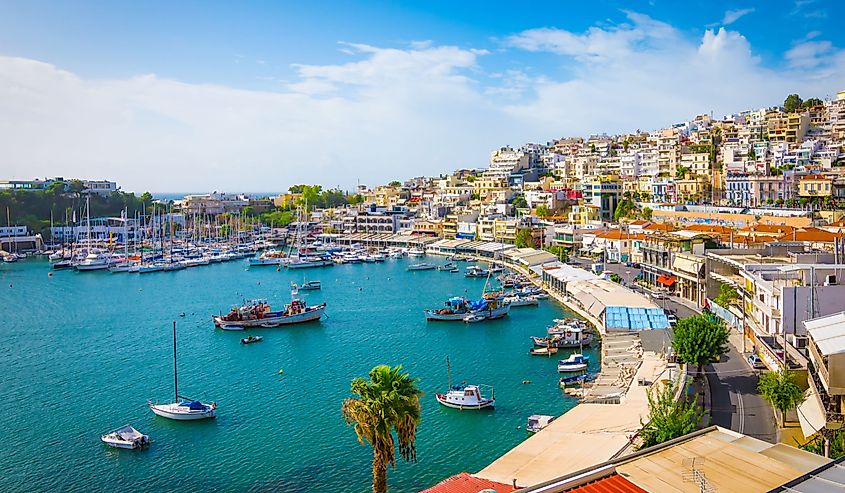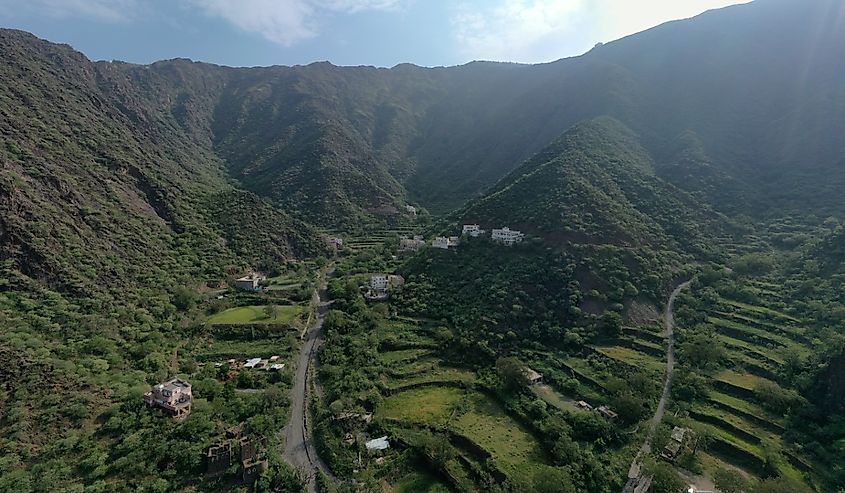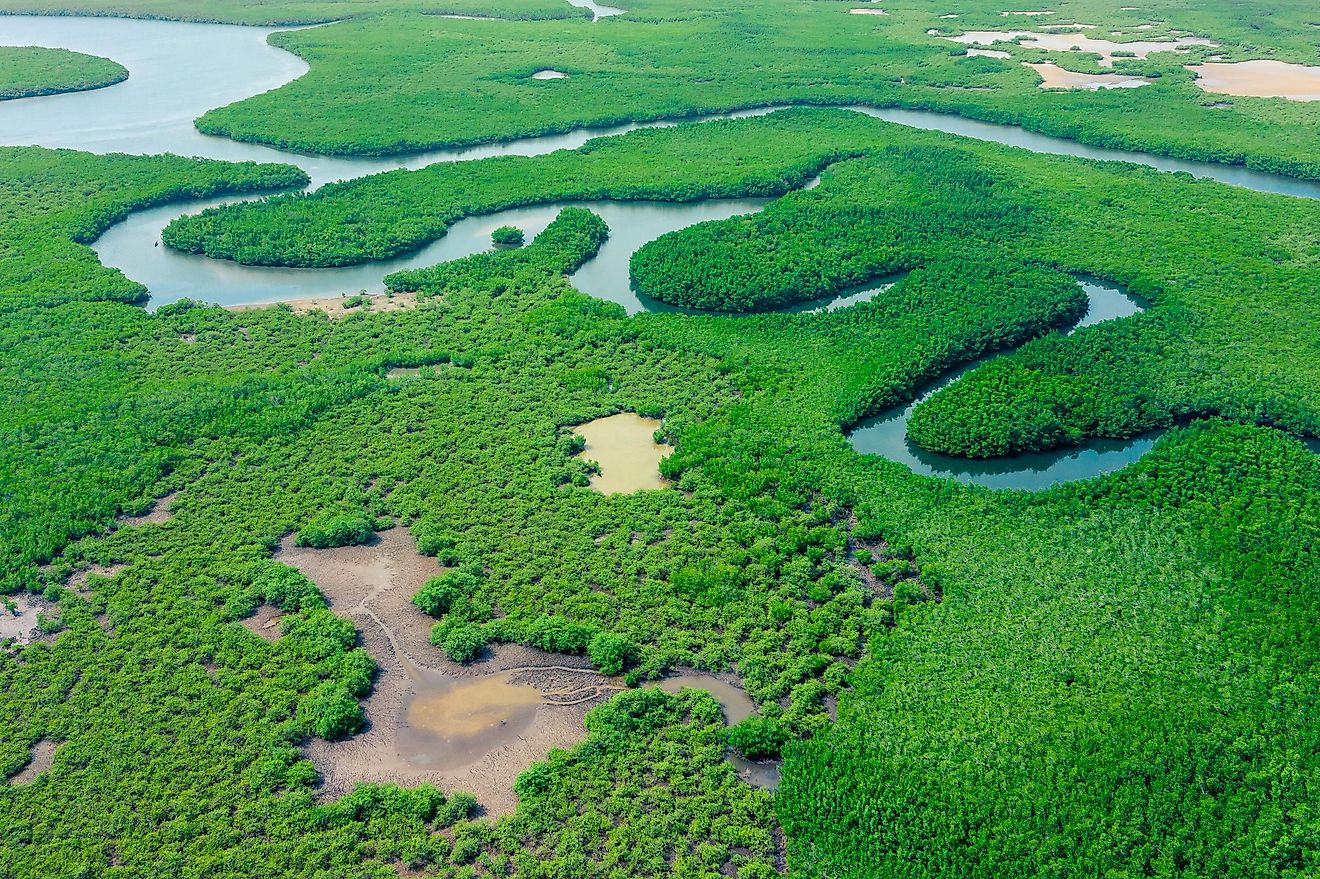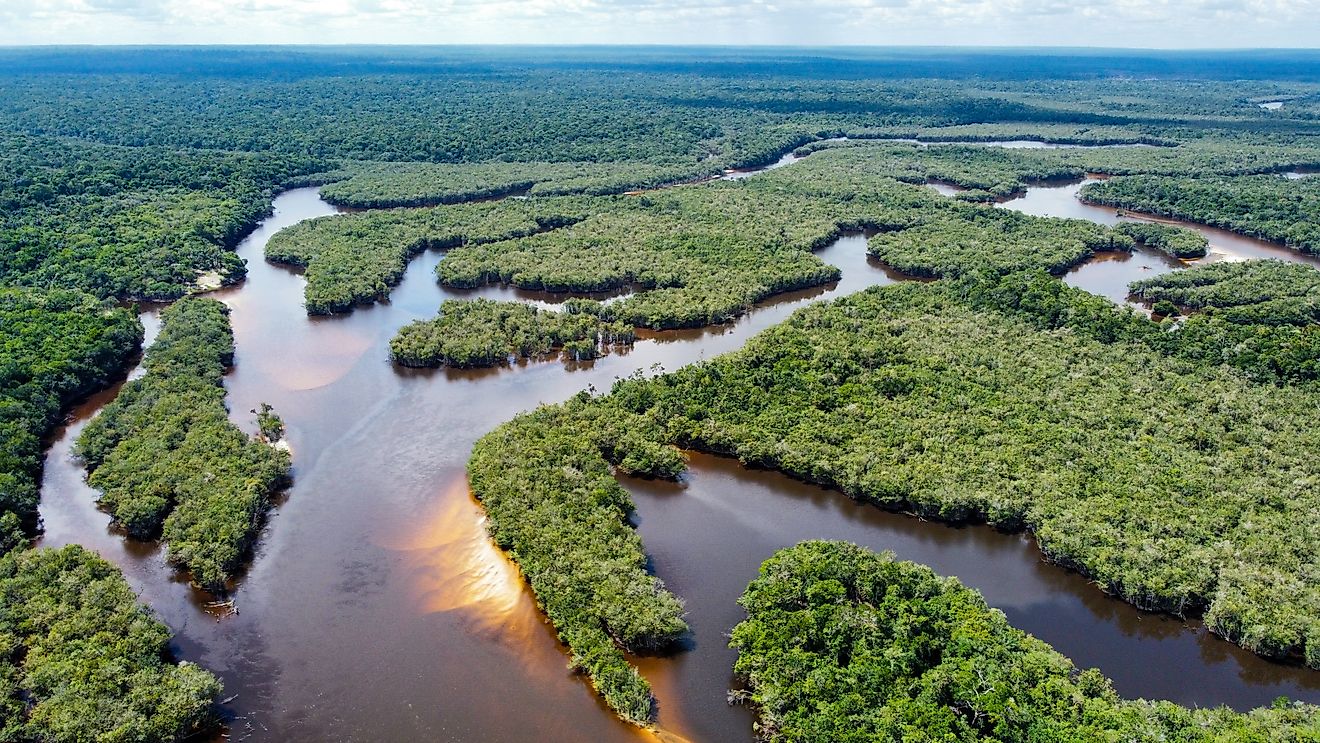
Some of the Hottest Places on Earth Where People Actually Live
The sun is the most important source of energy on Earth, but its intensity varies across the planet. Cities in temperate climates, like San Diego and Sydney, for instance, rarely experience temperatures exceeding 80 °F (26.6 °C), according to the World Meteorological Organization. However, many other destinations are not as fortunate, especially those located in arid and tropical climates. According to the United States Environmental Protection Agency, day temperatures above 95 °F (35 °C) are considered extreme. While worldwide temperatures are increasing due to global warming, some places are used to the extreme heat.
In the UNESCO-listed Lut Desert, for instance, land surface temperatures have been observed reaching 159 °F (70.7 °C), the highest on Earth, hot enough to cook an egg in an hour or less. This was recorded by NASA’s MODIS in 2005, and such temperatures are most common across desert regions around the world. Although the hottest places in the world are generally uninhabited, others have been inhabited by humans for thousands of years, shedding more light on how resilient mortals can be. From Europe to Asia, North America, and Oceania, discover places where people actually live and have braved some of the Earth’s hottest temperatures for hundreds or thousands of years.
Athens, Greece

The capital of Greece, one of the world’s oldest cities, and the birthplace of democracy, is also among the hottest inhabited places on Earth. For over 3,400 years, people have been drawn to this prime coastal location, surrounded by mountains and bordered by the Saronic Gulf, a part of the Aegean Sea. However, temperatures here can occasionally reach well over 100 °F (37.8 °C), as the city is classified as a Mediterranean climate, which is defined by hot, dry summers and wet winters.
Until 2021, Athens held the title of the hottest city in Europe, with a temperature of 118.4 °F (48 °C) recorded in 1977. The record was broken when a 119.8 °F (48.8 °C) temperature was recorded in Sicily, Italy, on August 11, 2021, by experts from the World Meteorological Organization (WMO). Notably, the city’s lack of sufficient forest areas, green spaces, and population density are among the main causes of this extremity. Athens is one of Europe's most densely populated cities, with over 3 million people, nearly half of the country, living in the city’s metropolitan area.

Additionally, around 10 million people visit the city every year, further making the city warmer. On the good side, the Saronic Gulf moderates the temperatures of the city’s southerly areas, and a northerly wind often blows throughout the day. The extreme temperatures are also rare, and the city’s mean maximum daily temperature is 73 °F (23 °C), according to the World Meteorological Organization. Besides, there are several beaches in the area, including the Kalamaki Beach, Glyfada Beach, and Edem Beach, where people often go to cool off when it becomes extremely hot.
Indio, California, US

California is famous for Death Valley, the record holder for the hottest inhabited place on Earth with a temperature of 134 °F (56.7 °C). While people do live in this extreme location, the 300-year-round residents largely comprise employees of the park and local hotels, and include members of the Timbisha Shoshone Tribe. However, about four hours south in the Coachella Valley is the town of Indio, which is inhabited by over 89,000 people and experiences temperatures that almost reach the levels experienced at Death Valley. According to the US Climate Data, average highs exceed 100 °F (37.8 °C) from June to September, and July and August can experience daily highs of 107 °F (41.7 °C) and above. Additionally, summer temperatures in Indio have reached 121 °F (49.4 °C), with the most recent being September 2024, according to the Western Regional Climate Center.
Indio’s extreme temperature, like other parts of the area, is a result of a hot desert climate and the surrounding mountains that contribute to its year-round warm weather. However hot it gets, the town remains an exciting destination to visit in California and has even been nicknamed “The City of Festivals.” This is because of the numerous events held in the town year-round, with the Coachella Valley Music and Arts Festival being one of the most famous, attracting over 200,000 people, and featuring music from different genres, alongside arts.
Phoenix, Arizona, US

Phoenix’s location in the Sonoran Desert and its low altitude are the main reasons for its extreme temperatures. The city is classified as a hot desert climate, and during summer, it becomes almost unlivable, as daily highs often exceed 100 °F (37.8 °C). According to WMO’s 30-year monthly averages from 1981 to 2010 for Phoenix, July experienced a mean daily maximum temperature of 105.8 °F (41 °C). Also, Phoenix experiences some of the longest streaks of hot days in the world.
In July 2023, for the first time, the city recorded a 31-day streak of daily highs topping 110 °F (43.4 °C). In 2024, a new record was also set with 113 consecutive days of 100 °F (37.8°C) temperatures or higher. This pattern suggests more record-breaking summer temperatures in Phoenix, which is already the hottest city in the US. Nonetheless, the city has hosted people for thousands of years, and currently accommodates over 1.5 million people, some of whom have died due to the heat waves.

Meanwhile, Phoenix is also susceptible to flash floods and dust storms. On the flip side, the city is one of the best places for a warm-weather vacation in winter as it experiences mild winters with temperatures rarely dropping below 45 °F (7.1 °C). Plus, this city has some of the country's top attractions, making it irresistible even with its extreme temperatures. Notably, Phoenix has the Desert Botanical Garden, home to one of the finest collections of arid plants in the world.
Jizan, Saudi Arabia

Saudi Arabia has always been known for sweltering temperatures year-round, and Jizan is one of the cities most exposed to this extremity. Located in the country’s southwestern corner, on the Red Sea coast, this city has a hot desert climate, with daily high temperatures in summer well over 95 °F (35 °C). Throughout the year, temperatures in Jizan are above 86 °F (30 °C) on average and rarely fall below 71.6 °F (22 °C), even in January, the coldest month.
The city also experiences frequent sandstorms and is humid year-round. Surprisingly, it is populated by around 173,000 people and receives thousands of visitors annually, many of whom come to explore attractions such as the Jazan Heritage Village. This village is one of Saudi Arabia’s top historic attractions, featuring beautiful gardens, interesting structures, cultural events, and a market full of traditional crafts and plants, all reflecting the area’s ancient history.
Sri Ganganagar, India

India’s state of Rajasthan hosts one of the world’s extreme weather cities, where it can stay hot for the majority of the year. Also known as Ganganagar, this city is located in the Thar Desert and has an arid climate, featuring long, hot summers and short, cool winters. According to the India Meteorological Department, temperatures in Sri Ganganagar can reach 120 °F (48.9 °C), especially in May and June. Additionally, the average daily high in the hot season, which is from late April to early September, exceeds 101 °F (38.3 °C), according to Weather Spark.
In ancient times, this area was part of the Indus Valley Civilization, but soon became desolate when its rivers dried up. However, it eventually transformed into a hub of agriculture with the creation of the Indira Gandhi Canal, India’s longest canal. Today, Sri Ganganagar hosts over 230,000 people despite its extreme temperatures, which, in fairness, is common across India, even in cities like New Delhi, where a searing temperature of 126.1 °F (52.3 °C), the highest in India’s history, was recorded in May 2024.
Doha, Qatar

Doha, the capital of Qatar, sits on the Persian Gulf and features a hot desert climate with extremely hot summers and mild winters. Year-round, daily highs in this city seldom fall below 71.06 °F (21.7 °C), even in January, the coldest month. As early as May, daily highs exceed 100 °F (37.8 °C) on average, and by July, they reach 106.7 °F (41.5 °C). On its hottest days, Doha can experience temperatures exceeding 113 °F (45 °C), and humidity can also be high, especially from August through September, despite the city’s dry desert climate.

In the meantime, rainfall is scarce in Doha, with a total annual rainfall of around 75 mm, usually occurring between October and May. Nonetheless, this city remains one of the most famous in the region, inhabited by more than a million people, and drawing in millions of tourists yearly. In 2022, the city even hosted the FIFA World Cup, the first for a country in the usually hot Arabian Peninsula and the Middle East in general, although the event was hosted in November and December. Doha also maintains green spaces, such as Aspire Park, the city’s largest park, featuring plenty of trees and the only lake in Qatar. Additionally, Doha has exciting indoor attractions such as the Museum of Illusions, where everything is designed to trick the senses.
Darwin, Australia

Australia is a unique country with interesting things, including dangerous animals, and temperatures that can cause heat strokes. Marble Bar, for instance, consistently experiences temperatures of over 100 °F (37.8 °C). However, it is sparsely populated with only 900 people. Darwin, on the other hand, might not experience the same extremity as Marble Bar, but it is still hot enough to be regarded as one of the hottest cities on Earth. Plus, Darwin is heavily populated, with around 139,000 people as of 2021. In the spring, which is from September to November in Australia, the city experiences its hottest temperatures, with average daily highs often exceeding 92 °F (33.33 °C), particularly in the season’s last two months. Summers in Australia, which last from December to February, are similarly hot, reaching over 90 °F (32.22 °C). These are typical of a tropical savanna climate under which the city is classified.

Temperatures in Darwin also vary very little year-round, so even in July, the coldest month, average daily highs stand at around 87.5 °F (30.8 °C). However, the months with the highest temperatures in Darwin are classified under the wet season. This means periods of increased rainfall, but also high humidity, especially in January and February, when humidity can exceed 80%, according to the Australian Bureau of Meteorology. The city is also one of the most lightning-prone areas in Australia and experiences frequent thunderstorms, particularly from October to December. Despite the heat, however, Darwin is one of the best places in the world to be, with attractions such as the Crocosaurus Cave, where one can get up close to Australian marine creatures, including the iconic saltwater crocodiles.
These Cities Are Worth Visiting - With Extreme Caution
These hottest cities around the world are still exciting places to visit or live, but the extreme temperatures beg for extreme caution. At temperatures exceeding 104 °F (40 °C), the likelihood of heat cramps and heat stroke greatly increases, especially with prolonged exposure. According to a study by the World Health Organization, approximately 489,000 people died due to heat-related issues from 2000 to 2019, and rising temperatures continue to pose serious threats. While appropriate clothing and plenty of water are sufficient measures in cities like Athens and Darwin, outdoor avoidance, or at least less exposure to the sun, is recommended in other cities, such as Phoenix. Plans can also be made so outdoor activities can be done outside the period between 10 am and 4 pm, as the daily highs occur during this part of the day.
*Except otherwise stated, all weather data are derived from the World Weather Information Service, which is presided over by the World Meteorological Organization (WMO).











